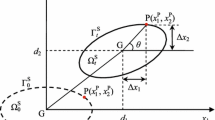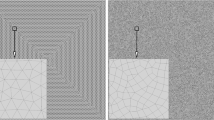This review paper begins with an overview of the boundary condition capturing approach to solving problems with interfaces. Although the authors’ original motivation was to extend the ghost fluid method from compressible to incompressible flow, the elliptic nature of incompressible flow quickly quenched the idea that ghost cells could be defined and used in the usual manner. Instead the boundary conditions had to be implicitly captured by the matrix formulation itself, leading to the novel approach. We first review the work on the variable coefficient Poisson equation, noting that the simplicity of the method allowed for an elegant convergence proof. Simplicity and robustness also allowed for a quick extension to three-dimensional two-phase incompressible flows including the effects of viscosity and surface tension, which is discussed subsequently. The method has enjoyed popularity in both computational physics and computer graphics, and we show some comparisons with the traditional delta function approach for the visual simulation of bubbles. Finally, we discuss extensions to problems where the velocity is discontinuous as well, as is the case for premixed flames, and show an example of multiple interacting liquids that includes all of the aforementioned phenomena.
Similar content being viewed by others
References
Fedkiw R., Aslam T., Merriman B., Osher S. (1999). A non-oscillatory Eulerian approach to interfaces in multimaterial flows (the ghost fluid method). J. Comput. Phys. 152, 457–492
Fedkiw R., Aslam T., Xu S. (1999). The Ghost fluid method for deflagration and detonation discontinuities. J. Comput. Phys. 154, 393–427
Nguyen, D., Gibou, F., and Fedkiw, R. (2002). A fully conservative ghost fluid method and stiff detonation waves. In 12th Int. Detonation Symp., San Diego, CA.
Liu X.-D., Fedkiw R., Kang M. (2000). A boundary condition capturing method for Poisson’s equation on irregular domains. J. Comput. Phys. 154, 151
Liu X.-D., Sideris T.C. (2003). Convergence of the ghost fluid method for elliptic equations with interfaces. Math. Computat. 72(244): 1731–1746
Kang M., Fedkiw R., Liu X.-D. (2000). A boundary condition capturing method for multiphase incompressible flow. J. Sci. Comput. 15, 323–360
Unverdi S.O., Tryggvason G. (1992). A front-tracking method for viscous, incompressible, multifluid flows. J. Comput. Phys. 100, 25–37
Sussman M., Smereka P., Osher S. (1994). A level set approach for computing solutions to incompressible two-phase flow. J. Comput. Phys. 114, 146–159
Brackbill J.U., Kothe D.B., Zemach C. (1992). A continuum method for modelling surface tension. J. Comput. Phys. 100, 335–353
Tornberg A.-K., Engquist B. (2004). Numerical approximations of singular source terms in differential equations. J. Comput. Phys. 200(2): 462–488
Engquist B., Tornberg A.-K., Tsai R. (2005). Discretization of dirac delta functions in level set methods. J. Comput. Phys. 207(1): 28–51
Smereka P. (2006). The numerical approximation of a delta function with application to level set methods. J. Comput. Phys. 211, 77–90
Leveque R.J., Li Z. (1994). The immersed interface method for elliptic equations with discontinuous coefficients and singular sources. SIAM J. Numerical Anal. 31(4): 1019–1044
Li Z., Lai M.-C. (2001). The immersed interface method for the navier-stokes equations with singular forces. J. Comput. Phys. 171(2): 822–842
Hong J.-M., Kim C.-H. (2005). Discontinuous fluids. ACM Trans. Graph. (SIGGRAPH Proc.) 24(3): 915–920
Nguyen D., Fedkiw R., Jensen H. (2002). Physically based modeling and animation of fire. ACM Trans. Graph. (SIGGRAPH Proc.) 29, 721–728
Nguyen D., Fedkiw R., Kang M. (2001). A boundary condition capturing method for incompressible flame discontinuities. J. Comput. Phys. 172, 71–98
Losasso F., Shinar T., Selle A., Fedkiw R. (2006). Multiple interacting liquids. ACM Trans. Graph. (SIGGRAPH Proc.) 25(3): 812–819
Landau L.D., Lifshitz E.M. (1998). Fluid Mechanics, 2nd edn. Butterworth-Heinemann, Oxford
Fedkiw R., Liu X.-D. (1998). The ghost fluid method for viscous flows. In: Haferz M., (eds), Progress in Numerical Solutions of Partial Differential Equations. Arcachon, France
Popinet S., Zaleski S., (1999). A front-tracking algorithm for accurate representation of surface tension. Int. J. Numer. Meth. Fluids 30(6): 775–793
Francois M.M., Cummins S.J., Dendy E.D., Kothe D.B., Sicilian J.M., Williams M.W. (2006). A balanced-force algorithm for continuous and sharp interfacial surface tension models within a volume tracking framework. J. Comput. Phys. 213(1): 141–173
Rasmussen N., Enright D., Nguyen D., Marino S., Sumner N., Geiger W., Hoon S., Fedkiw R. (2004). Directable photorealistic liquids. In Proc. of the 2004 ACM SIGGRAPH/Eurographics Symp. on Comput. Anim., pp. 193–202.
Li J., Renardy Y., Renardy M. (2000). Numerical simulation of breakup of a viscous drop in simple shear flow through a volume-of-fluid method. Phys. Fluids 12(2): 269–282
Juric D., Tryggvason G. (1998). Computations of boiling flows. Int. J. Multiphase Flow 24, 387–410
Qian J., Tryggvason G., Law C.K. (1998). A front method for the motion of premixed flames. J. Comput. Phys. 144, 52–69
Son G., Dir V.K. (1998). Numerical simulation of film boiling near critical pressure with a level set method. J. Heat Transfer 120, 183–192
Welch S., Wilson J. (2000). A volume of fluid based method for fluid flows with phase change. J. Comput. Phys. 160, 662–682
Enright D., Fedkiw R., Ferziger J., Mitchell I. (2002). A hybrid particle level set method for improved interface capturing. J. Comput. Phys.. 183, 83–116
Merriman B., Bence J., Osher S. (1994). Motion of multiple junctions: A level set approach. J. Comput. Phys. 112, 334–363
Author information
Authors and Affiliations
Corresponding author
Rights and permissions
About this article
Cite this article
Hong, JM., Shinar, T., Kang, M. et al. On Boundary Condition Capturing for Multiphase Interfaces. J Sci Comput 31, 99–125 (2007). https://doi.org/10.1007/s10915-006-9120-x
Published:
Issue Date:
DOI: https://doi.org/10.1007/s10915-006-9120-x




